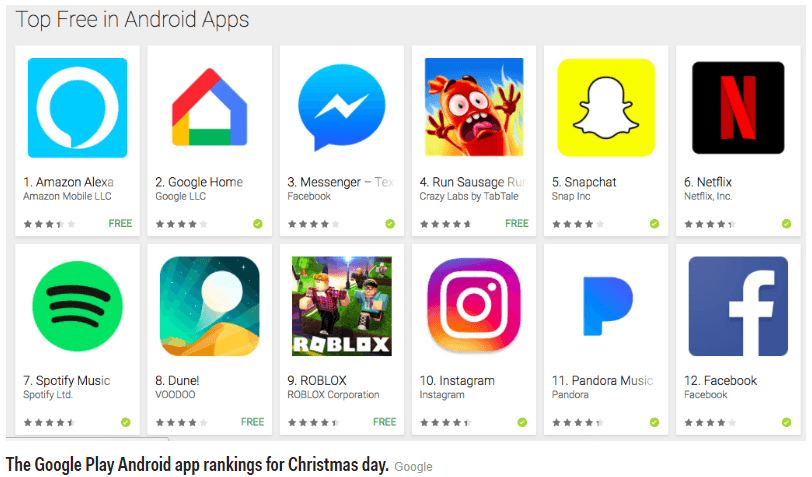In May 2016, Google announced that around 20% of queries made via its mobile app and on Android devices were by voice. That’s almost two years ago and in that time, we’ve seen the popularity of in-home virtual assistant devices such as the Amazon Echo and Google Home rise exponentially.
Apple has just launched the HomePod, which is likely to be popular with fans who are familiar with Siri and are bought into the Apple ecosystem.
As the voice search market continues to develop, what’s the impact going to be for SEO?
Here at Search Laboratory we are always running experiments to ensure that we advise our clients based on facts not assumptions, and researching the impact of voice search on SEO is an important part of our testing programme for the foreseeable future.
Until we have more concrete results from our tests, here’s an overview of some of the things we know at the moment, and five concrete recommendations for optimising websites for voice search now.
Virtual assistants
Amazon hasn’t released exact figures but did say that tens of millions of Alexa enabled devices were sold worldwide over the recent Christmas period. The #1 and #2 top free apps for Android in the Google Play store on Christmas Day were the Amazon Alexa app and the Google Home app.

These devices can link with a growing number of in-home smart devices and device-enabled apps which can switch off your lights, control your heating, stream programmes to your TV, turn the oven on, or even order a pizza or an Uber.
Devices that use voice search
Most smartphones now have some sort of voice-activated assistant built in, whether that’s Siri on the iPhone or the Google Assistant on Android devices.
It’s not just limited to in-home and mobile devices either, Microsoft’s assistant Cortana is built into Windows 10 and Siri is a feature on Mac desktops and laptops. According to Bing, 25% of all commands to Cortana in the Windows 10 taskbar are by voice.
We are even starting to see car manufacturers working with the likes of Amazon to get Alexa voice technology on the road.
A lot of these developments are not directly related to SEO but as it becomes the norm to talk to a virtual assistant in your home, your car or on your phone, it will drive the usage of voice search and voice in an SEO context can no longer be ignored.
This is important to our clients who depend on organic search for leads and revenue, and whilst ecommerce via voice is still in the very early stages, eventually people will be buying physical products via virtual assistants – but more on that later.
Initial tests, and five recommendations
As far as search goes, the Google Home (Google Assistant) returns results from Google search, whereas the Amazon Echo (Alexa) and Apple HomePod (Siri) both return results from Bing.
In our initial tests, the Google Assistant generally answers more questions, and with a higher degree of accuracy. Other studies have drawn a similar conclusion.
In the majority of cases, the Google Assistant will read out the answer from the featured snippet in a Google SERP.
For the question “what is a good broadband speed”, the below SERP is read out, starting with ‘According to Plusnet…”:

When asked of Amazon’s Alexa though, this is what we’re greeted with:

As mentioned earlier, Alexa returns Bing results. Looking at results in Bing for this query, we can see that a featured snippet is present:

In this case, unlike Google, we conclude that Alexa does not appear to be using the featured snippet for voice search results.
Recommendation 1: Focus on featured snippets to optimise for voice search
So is it just a case of getting as many featured snippets in the Google SERPs as you can?
Currently, this is our recommended approach to voice search optimisation. After all, the world of voice search only delivers one, single search result – just the top-ranking featured snippet will be read aloud, anything below number one will be out of the game, most of the time.
Adding complexity: compound queries
When we use voice to ask questions, we are much more likely to ask supplemental questions – compound queries.
When you start to compound queries, particularly with local intent, things start to get more interesting:
“where can I eat Italian food?” => “which is the best one?” => “show me the menu” => “what’s the phone number?”
In the location we used for this test, after the question “which is the best one?”, Google actually reorders the results to show the one with the best Google reviews.
Recommendation 2: Get favourable Google reviews as part of your local SEO strategy
Our second recommendation is to build a winning plan for gaining Google reviews as part of your local SEO strategy.
When we said “show me the menu”, the specific page on the website of the top ranking result was returned.
Recommendation 3: Maximise content aimed at your customers’ decision-making processes
OK, so this isn’t exactly new advice. However, it will become of increasing importance in the world of “one result” search.
In the above example, if the menu isn’t on the site, the home page is likely to be returned. This would disrupt the flow of the assistance, so adding as much relevant content to your site is recommended.
FAQ pages are also good resources, and answering as many questions as you can throughout the content of the site will have a significant impact.
It’s worth pointing out that the compound query example above was all done via the Google app on a smartphone, not via the Google Home device.
Recommendation 4. Use structured data markup
Other things you can do to help Google understand your content and make it eligible to be returned by voice centres around structured data markup. The use of Semantic HTML5 can also help.
Recommendation 5: People are not robots – adopt a more conversational tone in your content
The final thing to consider when building an SEO and/or content strategy which includes voice search, is that the queries are constructed differently, so using more of a conversational tone can be beneficial.
When typing a search query we tend to still do it with a machine in mind, for example, “best Italian restaurant Leeds” whereas with voice, it’s more likely to be something like “what’s the best Italian restaurant nearby?”.
Voice search and ecommerce
We mentioned earlier that, in time, people will use voice search to buy physical products.
Last year, bookmaker Paddy Power experimented by building an Alexa skill, an app for Alexa powered devices which allows people to interact via voice with the brand.
At the end of the experiment, there were five key takeaways. Here’s one specifically about purchasing via voice:
“The screen is still a vital part of any online transaction. People want to see what they are buying before making a purchase or placing a bet.
It will be many years before people are willing to place all their trust in AI and voice interfaces.”
Although we agree that it will take some time for widespread adoption of using voice search for ecommerce, technology is fast evolving to remove the remaining barriers, for example:
- In-home virtual assistant devices with a screen
- Right now, you can buy any product through an Amazon Echo that’s part of the Prime network or is in your order history. The latest version of the Echo is called the Echo Show – which has a screen, and you can see the product(s) you’re about to buy, lowering the risk of getting it wrong.
- Services that de-risk the purchase, such as Klarna
- Klarna allows you to order products from a retailer and only be billed after the returns process, so you only pay for what you actually keep. Order ten t-shirts, keep three – you’ll only then be billed for the three. This basically makes the transaction risk free: if you wanted you could return all ten.
Ecommerce giants such as ASOS and JD Sports are already offering payments via Klarna. It will be a logical step for for Klarna or a major retailer to develop an Alexa Skill or Google action that supports the phrase “OK Google, from ASOS, order me the three best-rated men’s white t-shirts in size medium with a maximum price of £50 and pay via Klarna”.
Watch this space.
Summary: five things you can do to optimise for voice search right now
Voice search has moved from infancy to childhood, and is still full of complexity and unanswered questions. However our initial research shows that there are some concrete steps that you can do right now to start winning, including:
- Focus on featured snippets to optimise for voice search
- Get favourable Google reviews as part of your local SEO strategy
- Maximise content aimed at your customers’ decision-making processes
- Use structured data markup
- People are not robots – adopt a more conversational tone in your content
Need advice?
If you would like a more in-depth discussion about your organisation’s ongoing voice search strategy, please get in touch.


